Hybrid learning – I had never heard this term until about a month ago, and now, it seems to be the type of learning environment that thousands, if not millions of teachers (and their students), are trying to navigate.
The hybrid model functions both online and in the physical classroom. Students will be expected to complete some of their learning at home, some of their learning at school, and all the while, teachers will be juggling both a physical and online classroom.
The good news is there is already an instructional practice that answers the question – how are teachers supposed to do all of this? The flipped classroom!
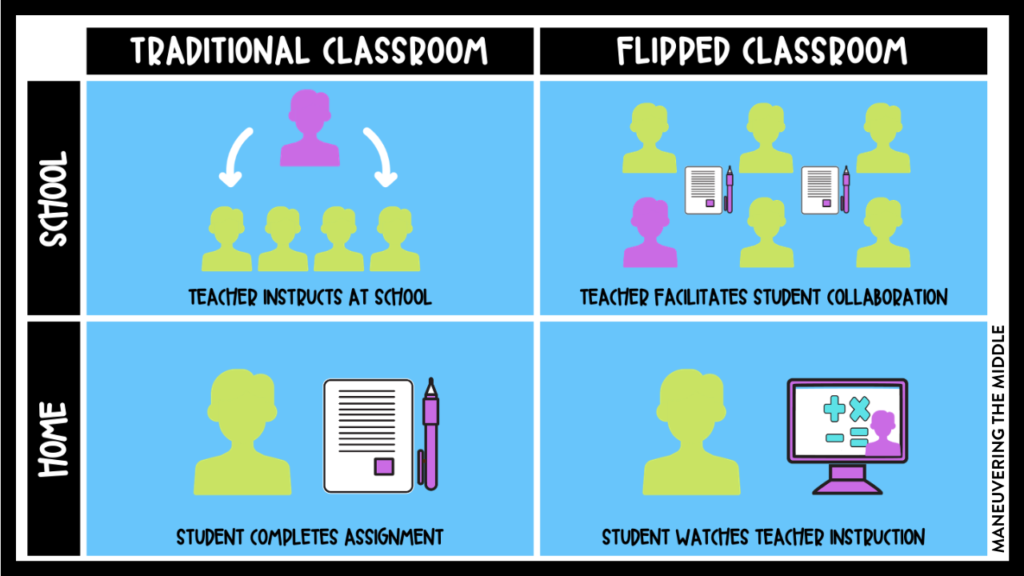
The Flipped Classroom And the Hybrid Model
What is the Flipped Classroom?
Many teachers have been using the flipped classroom for years. In fact, Clintondale High School made the transition around 10 years ago. While traditional classrooms function with a teacher instructing during class and students completing assignments at home, the flipped classroom has students watch a video of the teacher’s instruction for homework. The following day, students come prepared to practice the lesson in class with an assignment, activity or discussion with guidance from the teacher.
Why flip?
There are many advantages to flipping your classroom:
- Content is available outside traditional classroom time. Students have access to the videos to prepare for new content, to review, and not fall behind if they miss class.
- Students have the ability to rewind, pause, and rewatch. They can prepare their questions ahead of time.
- Frees up time for teachers to work one-on-one in the classroom with students.
- Students don’t go home to practice something wrong or struggle when they actually need assistance.
- Parents are not having to play teacher at home.
For the flipped classroom to work, there are a few websites that I recommend. I cannot stress that these two websites are WORTH IT. Edpuzzle and Go Formative. We have several posts that explain why they work well for teachers and students in remote learning – check them out here, here, and watch how 3 teachers using Maneuvering the Middle resources using these platforms here.
In short, Edpuzzle is a video platform that allows teachers to record videos or choose videos from a library, embed questions inside that video for students to answer, and then teachers can pull that data to make instructional decisions.
A/B Days
A hybrid schedule can take many forms. From what we have learned from teachers, schools that are considering the hybrid model are going to either rely on A/B days or week on/week off schedules (though there are variations for how this will look). For A/B days, I have brainstormed a “plan” you could pull from.
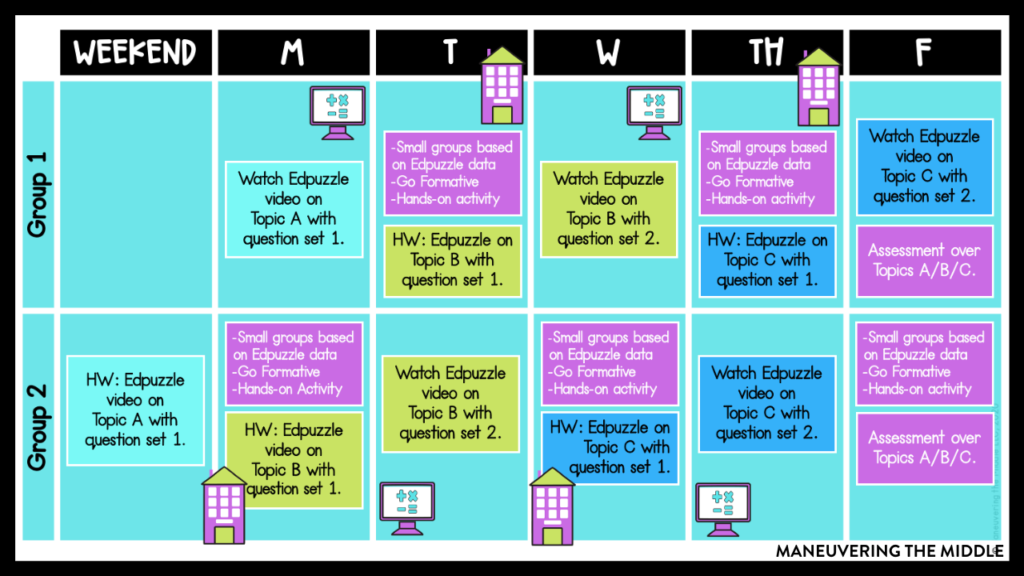
Note: This plan refers to a single Edpuzzle video with two different question sets. A teacher could record or find a video and use it twice, but ask a different set of questions for students to answer — a simple way to scaffold. My thinking is that this approach allows there to be learning every day without one group getting too ahead of the other group. Teachers can adjust and cut the second question set in order to help with pacing (if necessary).
Edit: (7/28/2020) We received some questions about what I meant by Topics A, B, C, and D. The topics are just referring to a specific objective. In my schedule above, this means students are spending 2 days on an objective before moving on. This ensures that students are working on their days at home, but also that if they are not, they are at least getting some form of instruction at school.
Week On/Week Off
This schedule basically means that a teacher will have about 50% of their students for one week in person while during that same week, 50% of their students are at home distance learning. The following week, the groups switch. The flipped classroom model is still going to be our formula for success. Here is another example of what could work in this model.
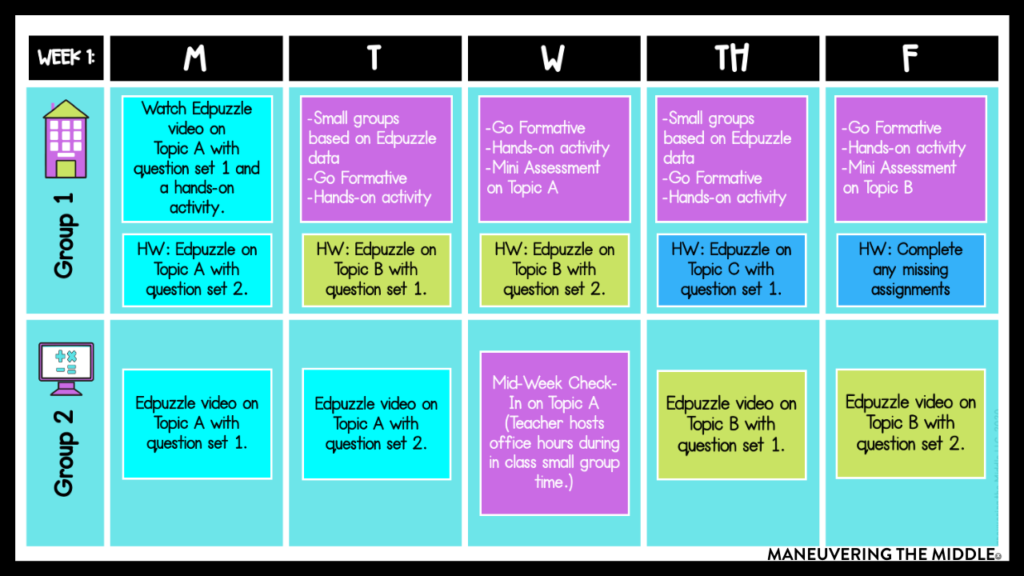
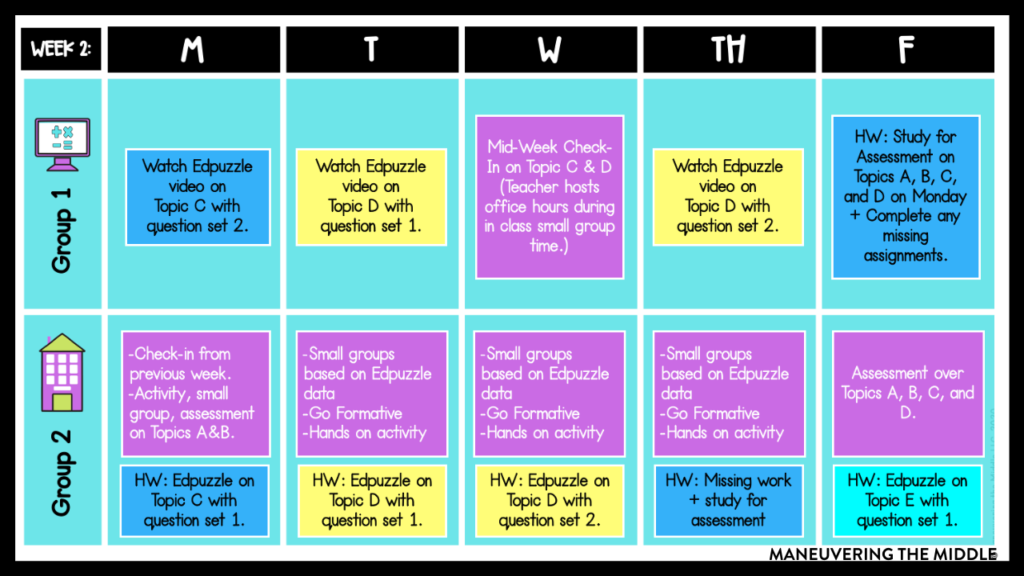 Technology is a Must
Technology is a Must
Even when students are in class, technology will still remain the active agent in students’ learning. This will help keep things consistent. The routine with technology will allow students to not lose out on instructional time if schools are shut down temporarily. And since most group work cannot adhere to social distancing, students can work together online.
The flipped classroom model requires buy-in from both parents and students. Is your school implementing hybrid learning? We hope this brainstorming session will produce some ideas and strategies for your remote and in-person classroom.
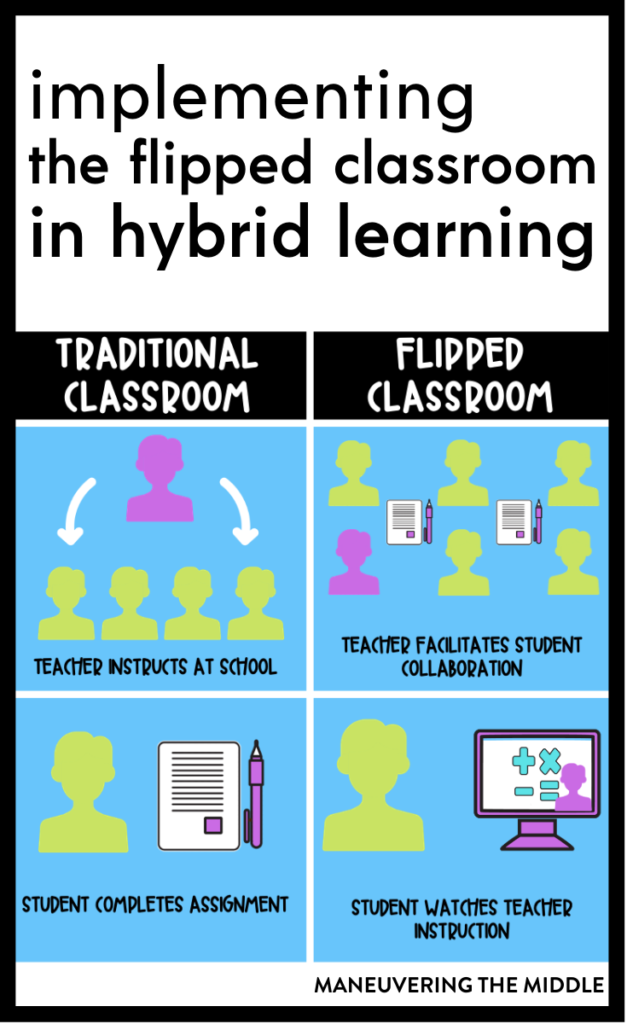
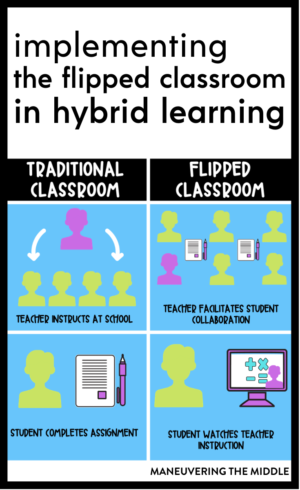
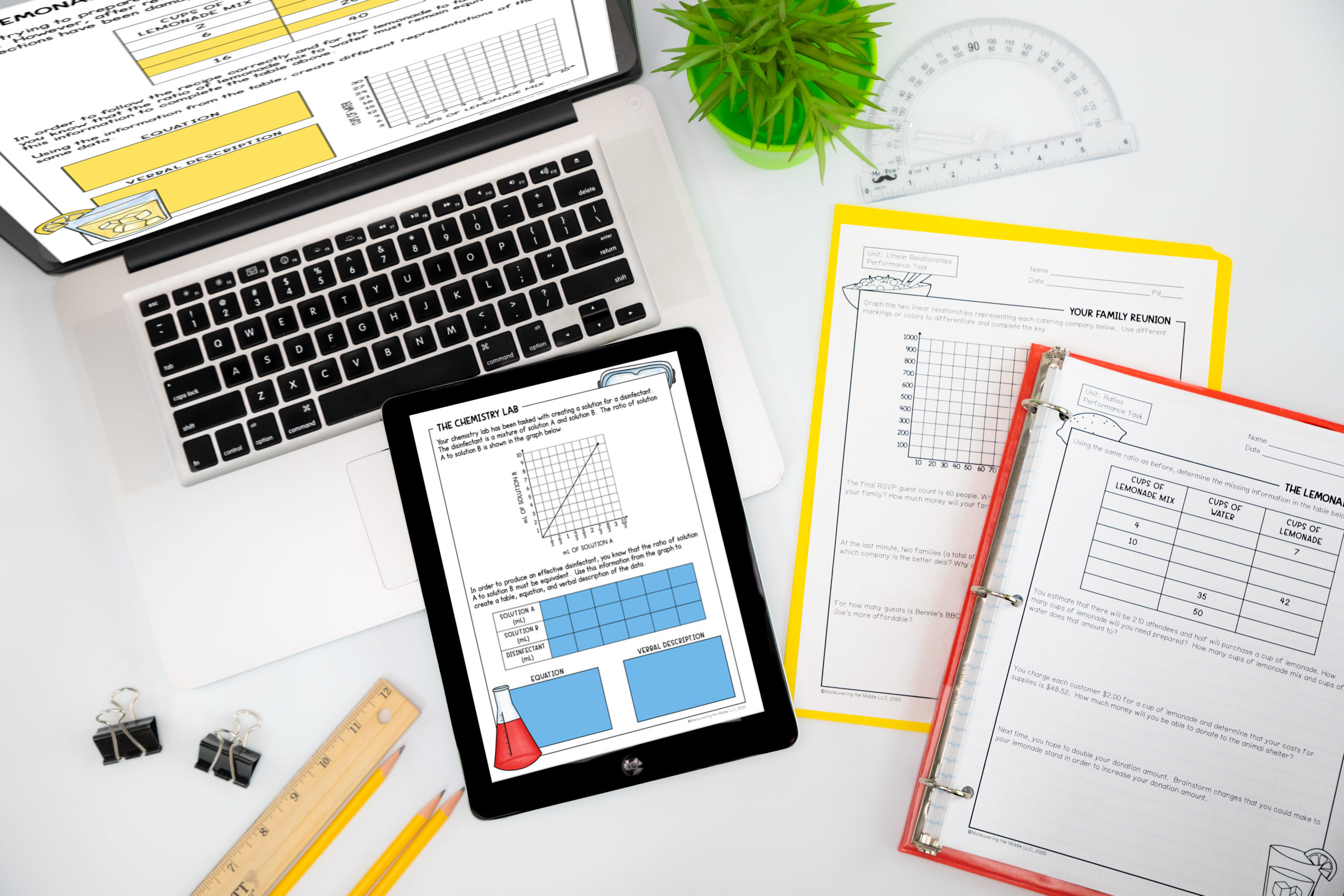
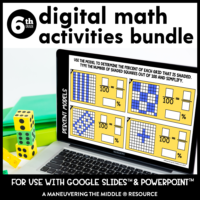
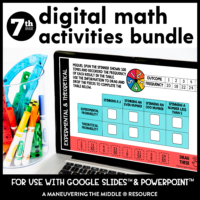
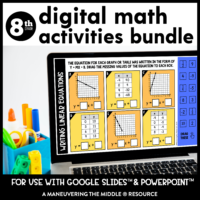
This model sounds GREAT and I would love to try it. My hesitation is what happens to the students who DON’T watch the video at home. What do you suggest they do in class? Watch the video? How do they catch up?
Hi, Lourdes – I think that is exactly what you do. They watch in class. I think we try to be as flexible as possible!
I have been flipping for 4 years now. We are going hybrid in September but our weekly schedule is: Group A – in school M/T, remote learning W-F and Group B – remote learning M-W, in school Th/F. Would love to get your thoughts on a weekly plan for that plan structure! Any and all ideas are appreciated!